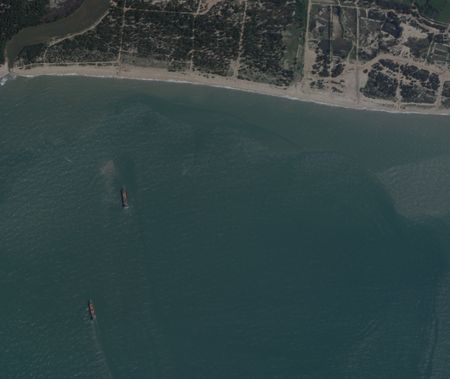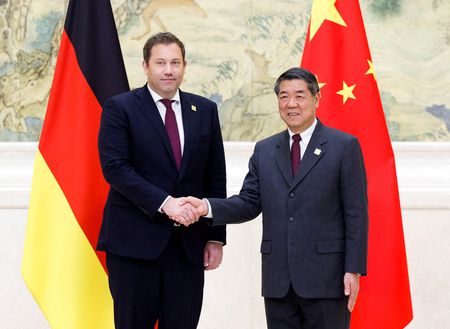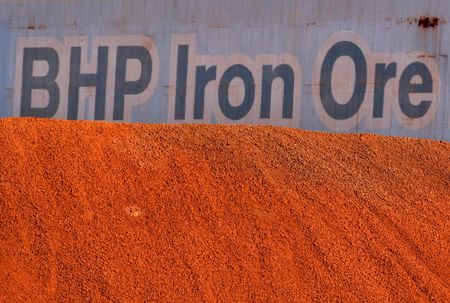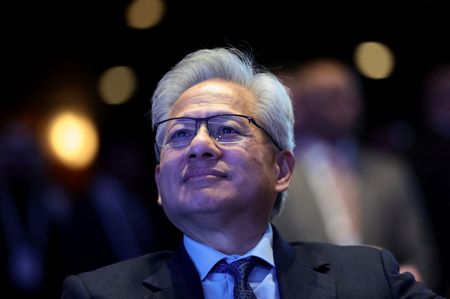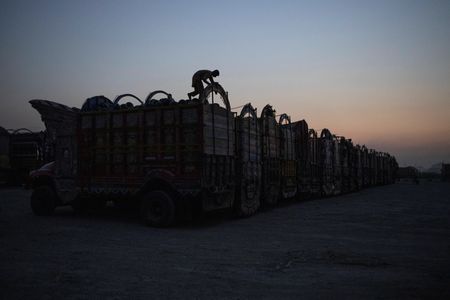TAIPEI (Reuters) -China is rehearsing for a potential invasion of Taiwan using a shadow navy of civilian cargo ships and ferries, according to a Reuters investigation that tracked vessel movements and analyzed satellite imagery of military exercises conducted this summer.
The investigation reveals that China’s People’s Liberation Army is experimenting with techniques that could accelerate the landing of troops and equipment onto multiple Taiwanese beaches simultaneously – a strategy that military experts say aims to overwhelm the island’s defenders.
Reuters identified 12 civilian vessels – six roll-on, roll-off car ferries and six deck cargo ships – as they traveled in mid-August to a beach near Jiesheng in Guangdong Province. Satellite images captured some of the ships conducting beach landing operations on August 23. The news agency’s full visual investigation is available here.
Satellite images show deck cargo ships unloading vehicles directly onto beaches using their attached ramps. Reuters is the first to publish images of this strategy during an amphibious landing exercise. These civilian vessels, roughly 90 meters long and widely used in Asian commercial shipping, can deliver cargo to beaches without port facilities due to their shallow draft and open-deck design.
The exercises also featured a self-propelled floating pier system that has not been seen since 2023, suggesting China continues to develop portable infrastructure that could speed the unloading of troops, equipment and supplies if existing Taiwan infrastructure is unavailable or destroyed during an invasion, according to naval warfare experts.
The outcome of a Chinese attack could depend heavily on the response of the United States, the island’s most important ally. For decades, the U.S. refused to say how it would react to an invasion, a policy dubbed “strategic ambiguity.”
President Joe Biden appeared to break with this policy, confirming on a number of occasions during his term that U.S. forces would defend Taiwan if it was attacked.
Asked about President Donald Trump’s position on Taiwan, a White House spokesman said: “The policy of the United States is to maintain Taiwan’s defensive capability relative to that of China. And as the president has said, Chairman Xi Jinping will not attack Taiwan while President Trump is in office.”
“The Taiwan question is purely an internal affair of China, and how to resolve it is entirely a matter for the Chinese people,” the foreign ministry in Beijing said in response to questions. China is willing “to pursue the prospect of peaceful reunification, but we will never allow anyone or any force to separate Taiwan from China by any means whatsoever,” the ministry said. China’s defense ministry did not respond to a request for comment.
In response to questions, Taiwan’s defense ministry referred Reuters to comments made in September by Defense Minister Wellington Koo, who said that the island maintains “continuous oversight” of China’s use of roll-on, roll-off vessels. “We closely monitor how they support military operations,” Koo said, adding that Taiwan has “developed relevant contingency plans.”
MULTI-POINT ATTACK STRATEGY
Admiral Lee Hsi-min, a former chief of Taiwan’s armed forces, said the satellite imagery shows China is developing capabilities for “multi-point, small amphibious landing operations” using large numbers of smaller craft. This approach could prove more difficult for Taiwan to defend against than concentrated landings at fewer sites, he said.
Use of civilian vessels also could greatly expand China’s capacity for amphibious landings. The Chinese military now has enough dedicated military ships to transport only about 20,000 troops in an initial attack, according to Taiwanese and American military experts. That is far short of military experts’ estimates of what would be needed in an invasion. Subduing Taiwan would require 300,000 to 1 million troops or more, they say – making civilian vessels crucial to any invasion plan.
Getting large numbers of armored vehicles ashore quickly will be critical. At one point during the August exercise, Reuters counted at least 330 vehicles that had accumulated on and near the beach.
Reuters spent about a year tracking more than 100 civilian vessels that have participated in past military drills or that are owned by operators frequently involved in military exercises. The news agency teamed with satellite data provider BlackSky Technology to observe the summer drills.
China’s commercial shipbuilding industry now accounts for 53% of global shipbuilding, compared to just 0.1% for the United States. The People’s Liberation Army, China’s military, has legal authority to commandeer civilian shipping for military purposes, giving China enormous amphibious lift capability beyond its already formidable navy – the world’s largest.
“It means that their amphibious lift capability is much, much greater than what it appears to be,” said Ian Easton, an associate professor at the U.S. Naval War College, who reviewed the exercise imagery.
CONCRETE INVASION PLANS
China views democratically governed Taiwan as part of its territory and has never renounced using force to take control of the island, though it says it prefers peaceful “reunification.” Opinion polls show the overwhelming majority of Taiwan’s 23 million people do not support a union with China. Taiwan’s government rejects Beijing’s sovereignty claims.
Yuster Yu, a retired Taiwanese naval officer who served on Taiwan’s National Security Council, said Reuters findings show China is developing concrete invasion plans.
“This kind of thing worries me more than their aircraft carriers,” he said. “It shows they are serious about putting troops on the ground.”
One senior Taiwan defense official, who requested anonymity due to the sensitivity of the matter, questioned the viability of using civilian ferries and cargo ships in an invasion. The official said it would be nearly impossible for China to deploy landing craft like the ones Reuters observed during an invasion, because they would be vulnerable to small, portable weapons such as shoulder-fired missiles.
The official suggested China may be waging “cognitive warfare” by publicizing menacing exercises designed to demoralize Taiwan and its allies.
(Reporting by Allison Martell, David Lague, Clare Farley and Minami Funakoshi. Additional reporting by Yimou Lee , Idrees Ali and Trevor Hunnicutt. Editing by Janet Roberts and Peter Hirschberg.)

